Lost Secrets of the Sunbird Quicksilver Mine
Finding Joy in the Los Padres National Forest's Post-Industrial Ruins
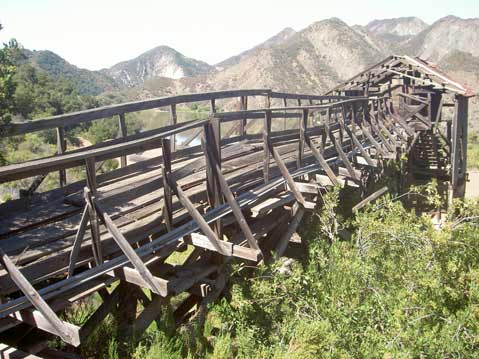
Over the mountains from the Riviera’s palatial, ocean-viewing mansions and far up the Santa Ynez River on the southeast bank of Gibraltar Reservoir lie the dilapidated remains of the Sunbird Quicksilver Mine. There, crooked wooden walls and towers, iron smokestacks and antiquated machinery, a couple of old trucks and track-mounted ore carts sit rotted, rusty, and bent from exposure and decades of neglect. For those intrepid hikers and bikers willing to trudge the five or so dry, sun-soaked, poison-oaked miles in, and who enjoy beautiful landscapes pockmarked with post-industrial ruins, this desolate place offers all the elements for a nice little Saturday.
The Mine Back Then
Although the Chumash had hunted up and down the river basin long before maps placed it on the Mexican land grant for Rancho Los Prietos y Najalayegua, the Gibraltar Narrows remained fairly quiet until the 1860s, when miner-prospector Jose Moraga noticed a reddish rocky outcropping he suspected contained quicksilver.
For the extremely uninitiated, quicksilver is more than a surfwear company. It’s the adventurous-sounding name for mercury, the heavy, scientifically instrumental, and highly toxic element. It has been used for thousands of years in everything from ancient Chinese alchemist’s potions and Egyptian cosmetics to dental fillings, electronics, insecticides, munitions, and scores of other ways that often unwittingly helped end people’s lives prematurely.
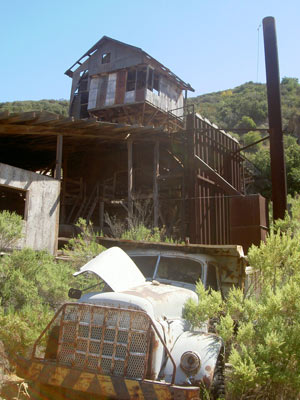
In nature it often occurs as mercuric sulfide, or cinnabar, a thick and massive reddish ore lodged in mountainsides. As early as 1558, Europeans discovered that if this is crushed and heated enough, the mercury evaporates and, if captured, can be condensed back to its pure liquid form, and then used to separate – or quicken – from their imprisoning rock precious metals like silver and gold.
After 1849, when millions flooded in to strip the American West of its gold and silver, many others flocked to the California Coast Ranges in search of cinnabar to supply the ore-seekers’ sluice boxes and assay offices. Between the 1840s and 1960s, more than 220 million pounds of elemental mercury was produced from who-knows-how-many millions more pounds of ore in one of the state’s first multi-billion-dollar industries.
By the 1870s, our own Gibraltar Mine was blasting, boiling, and bottling its way into the market, housing and employing up to 400 men at a time, including many Chinese to do the dirty work. Six-mule teams carried many hundreds of thousands of pounds of equipment and refined quicksilver over a battered road that crossed the river 22 times.
But over time, the mine’s extreme remoteness and periodic weather-induced isolation made it less competitive with new mines springing up across the north. Later, a flurry of legal hassles over property lines and mining claims (Moraga even jumped one), an alleged “squatters rights” battle, and a handful of fatal accidents and suicides further complicated things for the mine’s many subsequent owners. Eventually, the continually plummeting price of mercury set the mine’s long slow course into disrepair and eventual desertion.
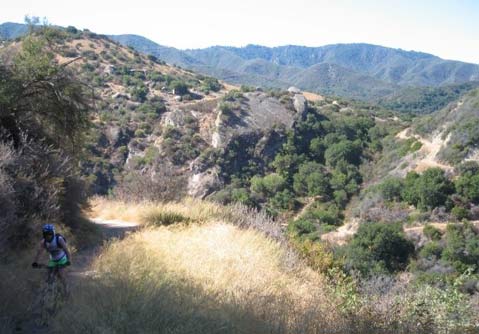
The Mine Today
Today, the mine sits on U.S. Forest Service turf. Actually, it has since 1899, when the federal agency began scooping up thousands of the surrounding acres, ultimately joining them to form the Los Padres National Forest in 1936. But the mine’s prior history of protected it as a “withdrawal area,” which basically means that so long as the owners remember to renew their permits periodically with the Forest Service, they can continue mining their mercury along the Santa Ynez River.
But in 1991, the Forest Service didn’t receive Sunbird Mines Ltd.’s usual renewal application. The domestic cinnabar market had finally collapsed and, soon, so would all the mines; the last closed in Nevada in 1992. The few remaining workers had already packed their stuff and left, apparently with no intent to knock down the buildings or clean up the debris, vehicles, spent mercury flasks, and other refuse. Realizing it was now their property – and liability – the Forest Service put up a fence and some signs to keep people out.
Over the years, proposals calling to demolish the site for being a hazard or to preserve it for being a cultural resource have been equally tabled; no one really wants to pledge the money or effort for either.
So now it just sits there. Thick iron bars block off the two dynamited shafts, and chain-link grates cover the air tunnel, but you can still see deep enough to imagine the dark, claustrophobic awfulness of having to work in them. A chain-link fence surrounds the mill building, but is close enough that you can skirt the property, admire the bullet-ridden old trucks, and sneak some good peeks or photos of the mill’s interior.
As much as John Muir might hate it, the place gives you a pretty cool glimpse of some decaying debris, vehicles, and structures as well as an interesting time period and a bygone industry. And if you get sick of looking at rusty old junk, turn around and look at that gorgeous manmade lake.
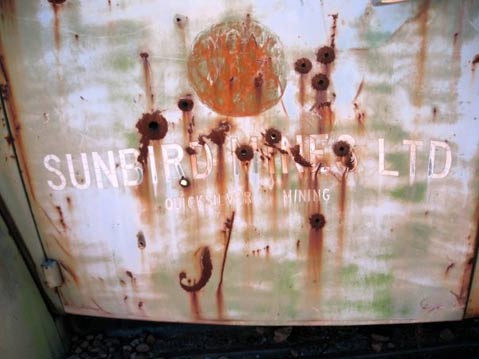
Dangers, Etc.
When you visit, keep in mind that the fence isn’t just there to protect the government form your civil suit. Making a chemically active, corroded scrap metal-laden, long-decayed wooden structure one’s playground poses incalculably high threats to life and limb. Among them: tetanus, hantavirus, four stories of wood and metal collapsing on top of you, chemical exposure, and, of course, mercury poisoning. Then there are all the rattlesnakes, black widows, and bats – and in the surrounding mud, we spied the paw print of a large cat.
Of course, the many names and inflammatory phrases scratched into metal fixtures prove the fence doesn’t always work. Still, even vandals seem to have taken the hint; the only evidence of “partying” we found was an empty six-pack of O’Douls.
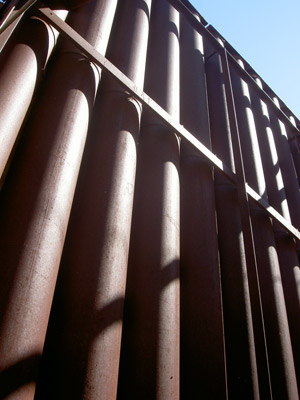
Doctors, scientists, and environmentalists tend to dislike abandoned mercury mines. In all spent mining sites, uncontained toxic tailings and reactive pollutants have a knack of running off and poisoning just about every biotic organism in their path. But when mercury – much from Gold Rush-era sources – gets into streams, groundwater, and/or city-slurping reservoirs, plants die, odd bacteria thrive, and aquatic critters like frogs and fish start to mutate into three-eyed, too-many-legged horrors. When it winds up in human bodies, it permanently seizes brains and nerves, causing tremors, erasing memories, mutating fetuses, and usually ensuring a long and agonizing death.
As most defunct mercury mines lie deserted and unreclaimed, they often end up on the Environmental Protection Agency’s watch list or as Superfund sites that, even after millions of dollars worth of mitigation, are almost never fully contained.
But for those fearing for Santa Barbara’s water supply, you can take your fingers back out of your throat. To be sure, in more than a hundred years of liquefying highly lethal chemicals up at Sunbird, some things went awry. But since 1920, when the city erected Gibraltar Dam, no known cases of local mercury poisoning have been traced to the adjacent mine. And in 1999-2000, a Forest Service study and a subsequent nearly million-dollar cleanup by consultants Ecology and Environment found most of the contamination confined to the mill building itself. Thus, the people most likely to have been poisoned were probably the ones who spilled all the waste and left it there in the first place. So if you blame them, then there’s some karma for you. If you don’t, then, well, I guess it’s still just really sad.
Regardless, it’s a relatively safe and interesting place to visit. And if you’re planning a picnic, go with tuna sandwiches.
Getting There
Drive up Highway 154 and to the very end of Paradise Road (at a staffed kiosk you’ll have buy a USFS Adventure Pass: $5 for the day, $30 for the year), then park in the lot. Hikers should take the “low road” at least one way, which passes Red Rock and follows the Santa Ynez River. Unless they want to ride in a rocky and/or flowing river, bikers should take the “high road,” a steep but moderate ridgeline fire road with great views. Both roads merge before climbing to Gibraltar Dam, a good water stop. Continue along the fire road past some government buildings. After the water tank when the road kinks 90 degrees right, continue straight through a gate onto the Gibraltar Trail, which descends, wraps around an inlet, climbs insultingly back up, around, and then down to the mine. It’s about a 10-mile round trip. Wear sunscreen and bring lots of water.
More Info
For more on the history of the region, check out S.B. Outdoors’ page on “Santa Barbara’s Trail History” here or the January 1966 issue of a kitschy old travel magazine called Desert Magazine here. For more on the hike itself, check out Santa Barbara Hikes’ page here. For more outdoor fun, see independent.com/outdoors.



